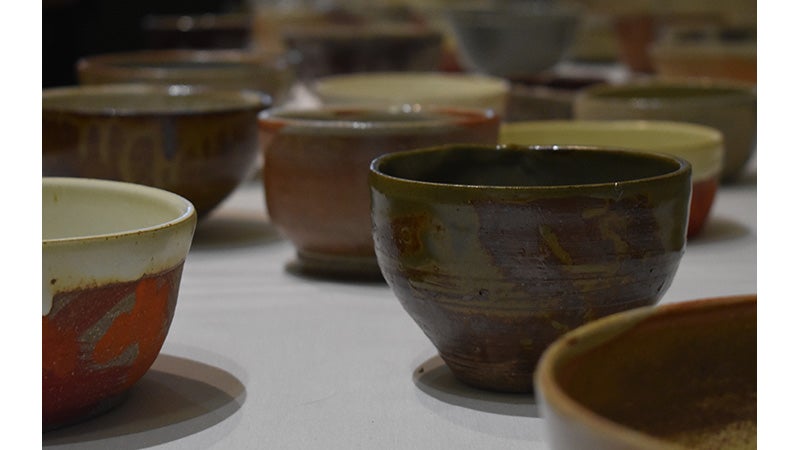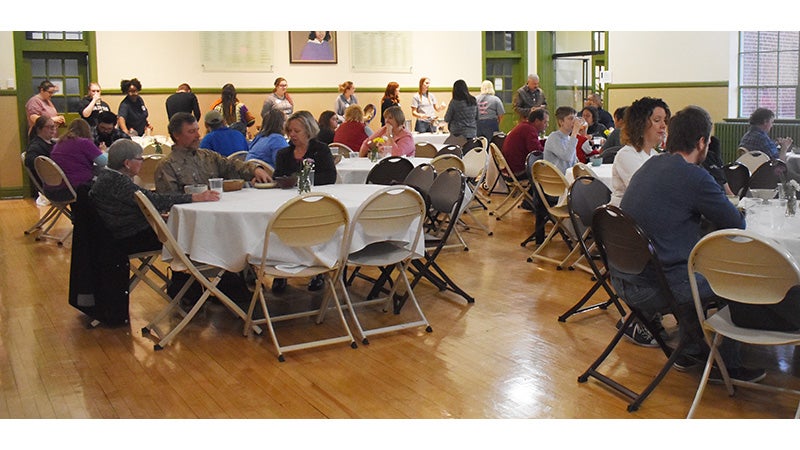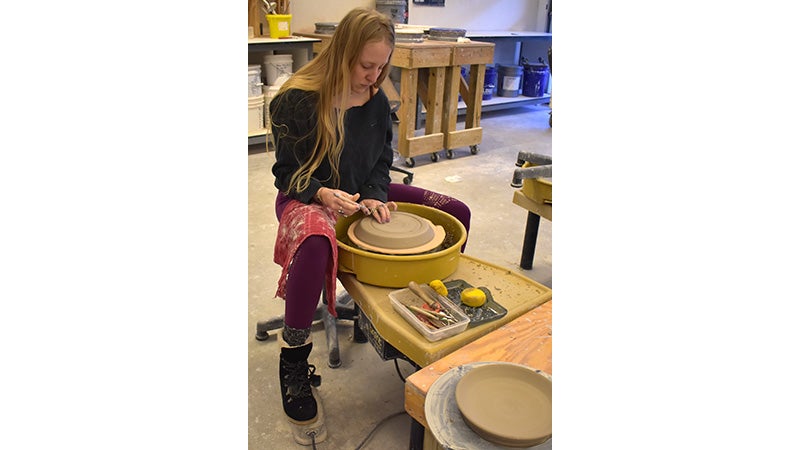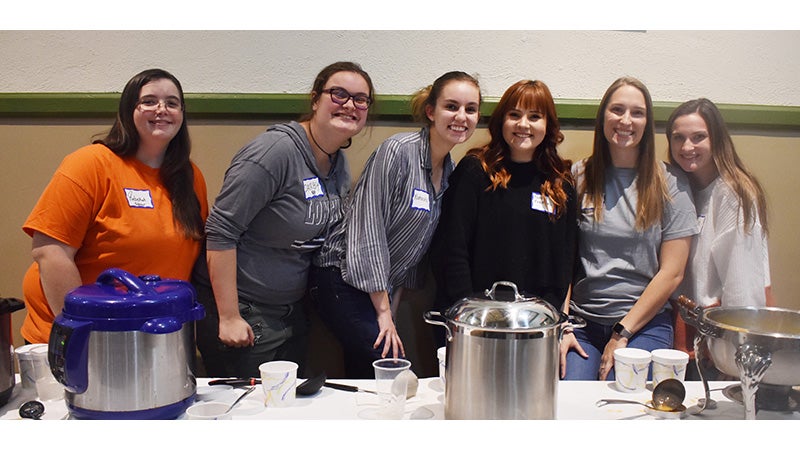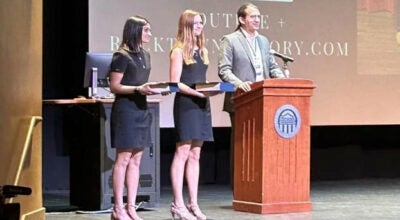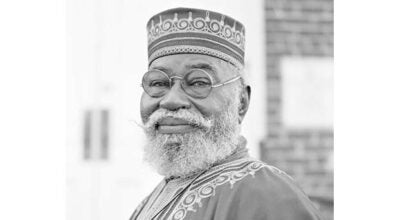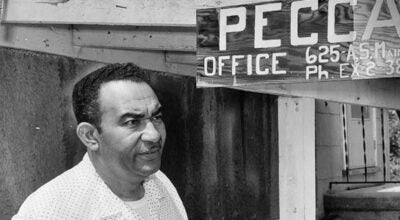Using art to fight hunger
Published 1:07 pm Friday, December 20, 2019
The power of artistic expression and community involvement came together to battle hunger and poverty on the night of Sunday, Nov. 10. Longwood students and townspeople gathered at the historic Robert Russa Moton Museum to participate in this year’s Empty Bowls, the culminating event of Longwood University’s Citizen Leadership and Social Justice Education Department’s 2019 Hunger and Poverty Awareness Week.
Empty Bowls is a national, grassroots effort to fight hunger. Schools and organizations throughout the country put on their own Empty Bowls every year, and this was Longwood and the Moton’s second time putting together the event. For a $10 donation, participants were able to select a one-of-a-kind, handcrafted clay-fired bowl made by Longwood art students in Professor Adam Paulek’s advanced ceramics class. The ceramics students then served the guests a variety of soups made by local individuals and restaurants.
On Friday, Nov. 8, Paulek was in his office in Bedford Hall, eagerly surveying a shelf lined with the students’ ceramic bowls. The event was only days away. “Well the students, they make the bowls beginning the fall semester,” he said. “These are the advanced class students and they’re making bowls specifically for this project.”
Paulek said that the eight advanced ceramics class students had probably made nearly 150 bowls for the special night, but had worked to cull their collection down to 100. “The idea is that they’re functional objects. They need to be ‘functionables,’ and they need to serve as soup bowls, so everything in there is a functional soup bowl.”
He picked up another bowl, flipping it upside down to note the hidden detailing on the bottom. “They do their own editing … The idea is that they give the best of themselves.”
Paulek added that all of the bowls were food safe. The bowls varied in size, shape and color, giving a sense of personality to each individual work.
“They make them on the wheel,” explained Paulek. “They glaze them. Every bowl gets fired twice in a bisque fire and then a glaze fire, and then they sand each one.”
Paulek elaborated that the bowls’ first firing is in an electric kiln, which takes the clay and turns it into a ceramic object that will better accept a glaze. The second firing occurs at a much hotter temperature, turning the bowls into stoneware. This process makes the pieces both dishwasher and microwave safe.
Not all of Paulek’s ceramics students are majoring in art. “That class has a few art majors,” said Paulek, “But I’ve got business majors. I have psych majors. Their interests range quite a bit.”
“Any time you’ve got a group of artists or a group of ceramic people in the area, eventually an Empty Bowls gets started, because potters tend to be fairly charitable people and want to raise money for food banks and pantries,” Paulek remarked. “And that’s the best part about this, because it’s not really about raising money. We’re only charging $10 at the door. Most Empty Bowls are probably twice that much. The idea is that the students get involved. It’s a price point that they can afford and it’s more of an exercise, really. They come, they do a charitable act of $10, they receive a bowl that is worth significantly more than $10, and they receive soup, the actual meal. They get a meal!”
He continued, “But they’ve taken part in a charitable act. And so, to get students involved and interested in that is really what we’re trying to do; to sort of get that on their radar of things that they are interested in and engaged in doing and hopefully continue to do for the rest of their life. That’s our goal.”
Paulek was particularly excited about his students’ chance for a full-circle experience come Sunday night. “That’s the really nice part about this is that they get to make the bowls and then watch their bowls being used. So people come and select their bowls. It makes you feel good because your bowl was chosen, or wasn’t. Both things are valuable — valuable lessons whether you see your work chosen or not chosen. That’s a big deal. And then you watch people eat out of your work. That’s a really important thing. And so they will actually serve the soup into the bowl of the person who will actually go sit down and eat it. It’s very important for a ceramic artist to have that experience.”
“One of the important aspects of these objects, these pots, is that they are eternal objects,” said Paulek as he sorted through the students’ work. They do not degrade. They don’t change. Your children can have them. Your grandchildren can have them. Your great grandchildren can have them. It goes on and on and on. You look at cultures through the ceramics that were made. They stay. You think of ancient Greek pottery. Think of early Iranian pottery … There’s this old adage to potters: Well, how long did it take to make that? A crusty old potter will tell you, well, it took 50 years, because it takes a lifetime of experience to be able to do that. These students are just starting on that path.”
The week leading up to Empty Bowls was filled with opportunities for community engagement in an effort to spread awareness about hunger and poverty that surrounds the area. On Monday, Nov. 4, students had an opportunity to meet members of Elwood’s Cabinet, a supplemental food pantry at Longwood. Later that evening, the university held “Will Read for Food,” where students could hear creative writers read their works aloud in exchange for donations to said food pantry.
On Tuesday, representatives from Farmville’s FACES food pantry, Madeline’s House, Meals on Wheels, Habitat for Humanity, Piedmont Senior Resources, Steps Inc. and the Virginia Cooperative Extension held a panel to discuss area hunger and poverty. Wednesday saw guest speaker Doris Seal from Delma’s Food Pantry discuss the organization’s efforts to help those in need. Elise Kowalksi discussed Share Our Strength, an organization helping to end poverty.
On Saturday, volunteers worked to help clear 12 community garden beds for the winter at the Farmville Community Garden.
The week’s finale came on Sunday night as local residents and Longwood students flooded into the Moton Museum. Inside, tables were lined with 100 beautiful bowls for guests to choose from. Individuals picked up the artwork. They felt the textures of the bowls in their hands. They studied varying shapes, sizes and colors before making the difficult selection.
In the next room, the ceramics students stood behind an array of slow cookers. One19, Charley’s Waterfront Cafe and Wine Bar, Merk’s Place, The Fishin’ Pig, Alanna Rivera and Effingham’s all provided soups and stews for the event, and Chick-fil-A donated the night’s beverages.
The ceramics students watched as individuals walked in clutching their creations. “That’s your baby,” a student whispered to her peer as she filled a maroon bowl with soup.
The tables filled up with diners, each of which enjoyed fellowship and conversation. Guests delighted in comparing their selected bowls, and were invited to enjoy as much soup as they could eat.
“This is the culminating event,” said Longwood Assistant Director of Multicultural Affairs and Hunger and Poverty Awareness Week Committee Chairman Jes Simmons, “and we’re here just to celebrate. The week is over. It’s been really successful, and we’re just having the soup. You know, we have these empty bowls, but we can fill them with soup, so we don’t go hungry. And it’s just very convivial and people are just talking with like-minded people and hopefully making new friends.”
Simmons highlighted that the donations collected from Empty Bowls will go to Delma’s Food Pantry in order to aid in the work that the organization does in an effort to end hunger.
“We want to let it grow,” she said in reference to the program. “We want to reach out to more people in other areas and have them come in as well. We’ve been grateful for the local restaurants that have donated and the students that have volunteered. Adam is eager to keep doing this as an event, and his students.”
Simmons stated that Catherine Swinsky, a student representative from Longwood, had been particularly involved in the week, working with Ellwood’s Cabinet and making a poster for the event. “She’s been to every meeting and she’s been tireless.”
Glancing over her shoulder at the tables filled with people enjoying their soup and handmade bowls, Simmons explained her pride in seeing so many Longwood students in particular at the event. “It just shows you the compassion, the awareness,” she added. “And just being true citizen leaders. Being involved in the community. It’s being a Lancer, is what it is.”
The following morning, Robert Russa Moton Museum Director of Education and Public Programs Cainan Townsend commented on the event’s success. “It’s a great partnership, certainly. Poverty and hunger are issues that we see very prevalent in the community. We are just happy to be involved in the spreading of awareness and to raise money for such a good cause, and a local cause. We’re already talking about planning for next year, and it’s just a great example of local community partnerships and how effective they can be.”


